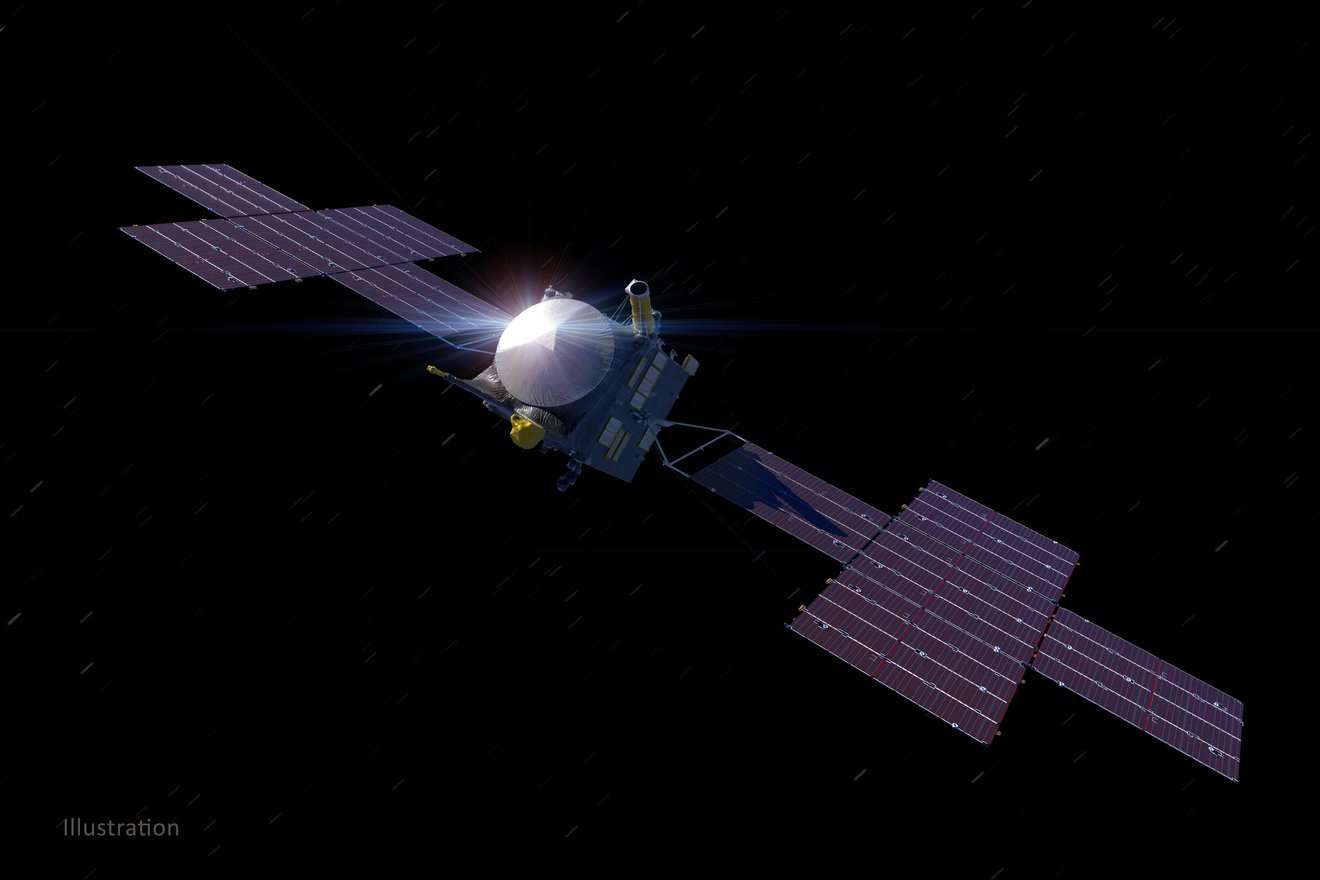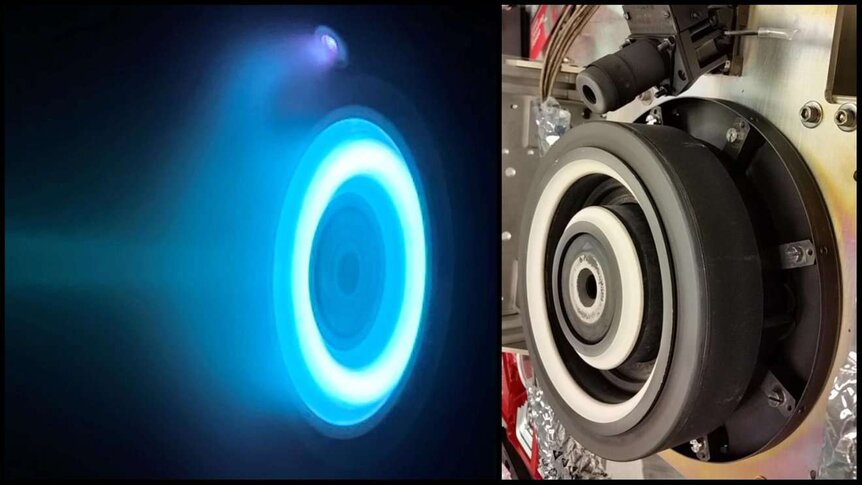Create a free profile to get unlimited access to exclusive videos, sweepstakes, and more!
The shocking (literally!) plan for what NASA’s electric spacecraft Psyche will do in deep space

It used to be only science fiction that dreamed of electric spacecraft (or sheep). But now a real-life one will soon be venturing into deep space.
NASA’s Psyche spacecraft — headed to the metal asteroid of the same name — is going to use solar electric propulsion (SEP) to propel itself 1.5 billion miles away. It will only need rocket fuel to launch on a SpaceX Falcon Heavy and break through the atmosphere. On its own, it will rely on solar arrays that convert electricity into power for its thrusters to take it to the asteroid belt. This is the first time an electric spacecraft with Hall thrusters will be flying beyond the Moon.
Other electric spacecraft have been launched before, but none made the journey to deep space. Psyche's solar arrays will turn sunlight into the electricity to power it through space. The only other assist it will get is from xenon, the same gas that lights up your plasma TV. Psyche will eventually accelerate to an unreal 124,000 miles an hour despite the relatively gentle thrust.
Psyche mission principal investigator Lindy Elkins-Tanton of Arizona State University, which collaborated with NASA’s Jet Propulsion Laboratory (JPL) and Maxar Technologies for this mission, always envisioned the spacecraft being powered by electricity.
“Sunlight is gathered by our 20 kW solar panels and converted within the spacecraft power system before being delivered at the correct voltage to the thrusters,” she told SYFY WIRE.
So how do these thrusters actually work? Known as Hall thrusters, they have also never gone past lunar orbit before, but are more than qualified. The alternative would be around 33,000 pounds of chemical propellant. Instead, Psyche will carry tanks of xenon propellant, which will not be burned by the electricity produced from sunlight, but instead get an electric boost of energy itself. This is how the xenon atoms will be accelerated so they reach much higher velocities than with chemical propellant, and also explains how Psyche will zoom so fast.
Xenon is an inert gas that should not interfere with the spacecraft by causing any unexpected reactions. Hall thrusters give the xenon atoms extra velocity by charging them into ions and using high voltages to get the ions moving at superfast speeds. Giving the neutral atoms a charge needs high-energy electrons. These are injected into an electron emitter, or cathode, and sent whirling around the middle of the thruster by a magnetic field. Electrons are slowed down by this magnetic field before going to the chamber filled with xenon, the anode.
What results from all those racing electrons is an electron discharge, essentially a hot plasma, in which they smash into xenon atoms (which are neutral). What results from all these collisions are xenon ions and free electrons. Because the electrons are slowed down by the magnetic field, and the ions have too much mass to be affected by the magnetic field, ions get more time to accelerate in the field between the cathode and the anode. They are then discharged and give the spacecraft thrust (and an otherworldly blue glow) as it shoots through space.
“This power system has been flown many times on satellites built by Maxar, and their proven spaceflight hardware is why we chose them as our industry partner,” Elkins-Tanton said.
This is hardly Maxar’s first flight. But while they have had decades of experience using SEP tech to fly commercial satellites, this is the first time they are dealing with a deep space mission, which is why they had to join forces with JPL to modify Psyche’s Hall thrusters so they can handle it. Maxar also built the chassis that contains all of the spacecraft’s systems. The only concern left is how to carefully maneuver Psyche into the orbit of the asteroid Psyche, since not much is known about its gravitational field. It will move in closer and closer through a series of orbits.
“We will use the spacecraft's movement in response to Psyche's gravity field (measured through Doppler effect in the radio communications) so we can map the field, first from high-up Orbit A, and then from closer and closer to the asteroid as we understand the gravity field better and better," said Elkins-Tanton.
Psyche will need to undergo thermal vacuum testing in at JPL and will soon be headed for Kennedy Space Center to take off next year.















